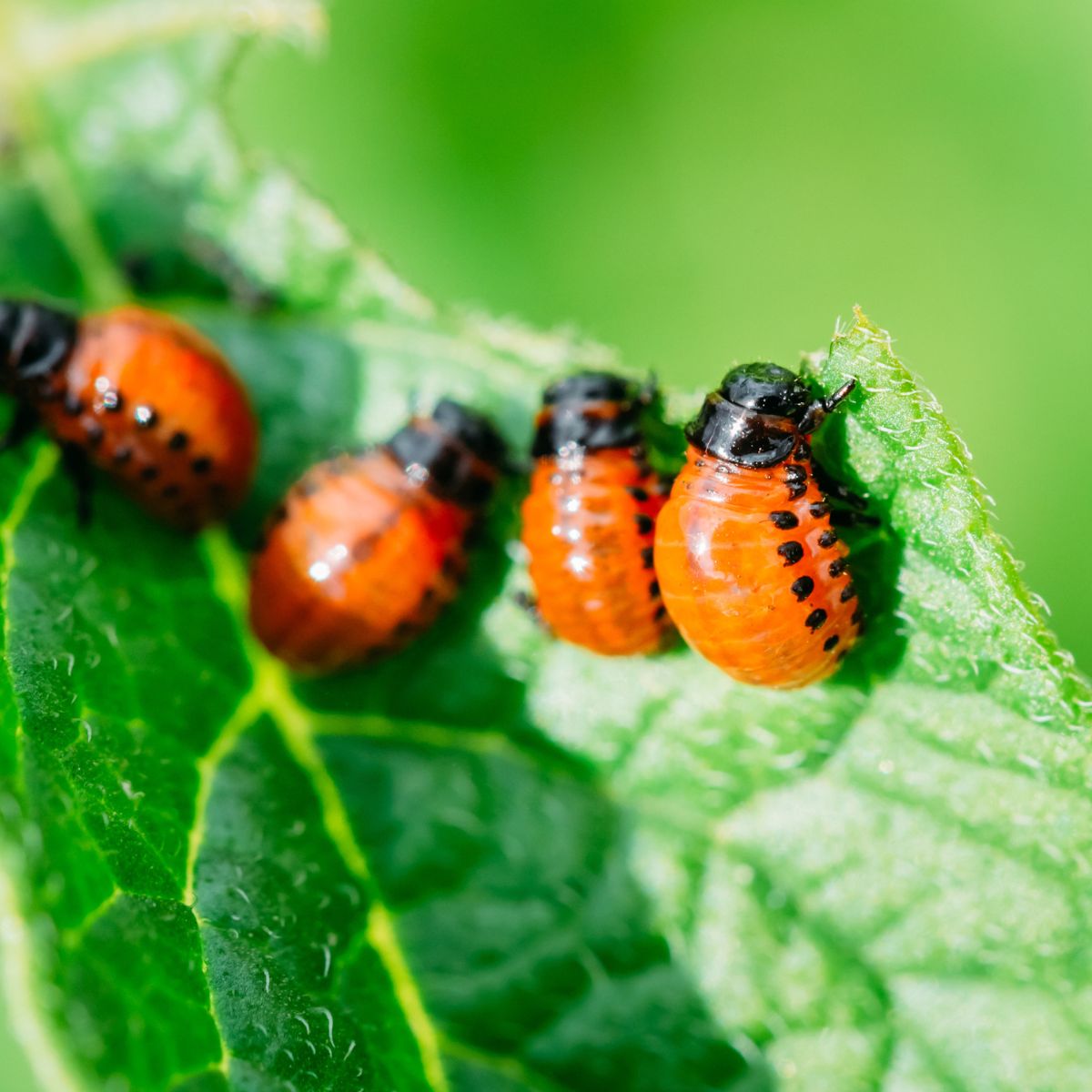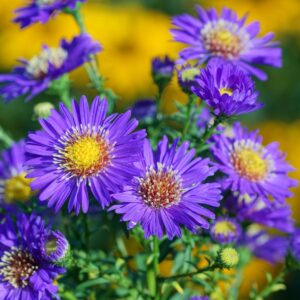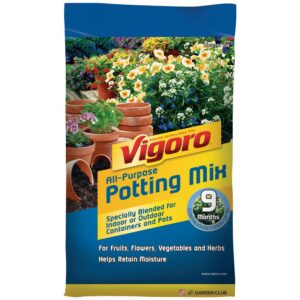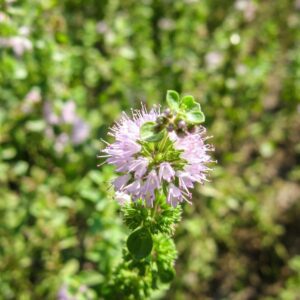Planting is often a relaxing and beneficial hobby for people with a lot of free time. Probably the best part about planting vegetables and fruits is being able to harvest them. One particularly beneficial crop to plant is the potato, which is both delicious and versatile.
But what if you've meticulously cared for your potato plants, eager to harvest and enjoy them, only to wake up one day and find bugs on them? It would be very frustrating to find these potato bugs on your potatoes or on any other crops you may have planted.
There are many kinds of potato bugs that can be a bother but there are also ways to get rid of them. Read on to find out the most common kinds of potato bugs which you'd find lurking on your plants, what potato bugs eat, and how to get rid of them.

Read Next
Types of Potato Bugs and What They Eat
Potato bugs are a common pest of plants in the nightshade family, including potatoes, eggplants, tomatoes, and peppers. Below you see more on each type of bug.
1. Colorado Potato Beetle
This is a bug with a yellowish color and brown stripes which extend all the way to its back. These types of bugs seem to appear out of nowhere in no time at all. Feeding mainly on potatoes, these types of bugs are the most destructive type as they are able to go through a whole potato crop in a very short time.
2. Potato Leafhopper
These small, wedge-shaped bugs are very active yet frequently unseen because of their size and tendency to feed on the underside of potato leaves. These kinds of bugs use piercing and sucking mouthparts to take out the sap from potato leaves.
Infestation from these types of insects can be spotted by a triangle-shaped brown mark at the very tip of the leaves, which makes them roll upward as though the leaves have been seared at the tip. When you notice this, you can inspect the underside of the leaves to see if there are these bugs.
3. Flea Beetles
These kinds of bugs are so named as the adults tend to hop like a flea from plant to plant. They don't just cause damage to potatoes but to other plants as well when they leave their larva behind. The larvae of the flea beetles destroy crops as they burrow through the potatoes or other tubers, which then leaves the crops vulnerable to fungus, rot, and bacteria.
4. Jerusalem Cricket
This particular type of bug may cause most people to be startled as it is quite big. Measuring up to 50 mm long, it is yellow and brown with a big head and beady eyes. Jerusalem crickets are nocturnal and primarily feed on insects, roots, and tubers, which include potatoes, which makes your garden the best environment for this type of bug.
You'd know that there is an infestation of Jerusalem Crickets in your garden when they start appearing inside your home, which could be very concerning.
5. Blister Beetle
Blister beetles are can be found near deserts or range lands. Measuring from ¾ of an inch to about 1 ½ inches in length, these types of bugs feed on the leaves of potato plants, leaving them looking a bit tattered. They don't generally do much damage to potatoes themselves, only to the leaves.
How to Avoid the Emergence of Pesky Potato Bugs
There are different ways of getting rid of potato bugs in your garden to be able to successfully grow your plants and harvest your crops when the right time comes. There are different ways to get rid of different types of bugs, depending on the level of infestation. The most important thing to remember is to be observant to be able to catch these bugs early on.
Avoidance is better than cure. Being able to inhibit the invasion of potato bugs in your crops should be the first thing to think about as this would help you avoid a lot of problems.
- A great way to do this is to plant "trap crops" a good distance away from your vegetable crops. These types of plants are those that the bugs would tend to prefer more than your crops. They then feed on the trap plants, keeping your crops safe!
- In the case of potato beetles, you may be able to avoid their appearance by digging a trench around your potato crops and covering it with plastic. Then lightly sprinkle some soil on the plastic as, for some reason, these beetles cannot get across plastic when it has soil on it.
- Prevent potato leafhoppers from getting to your plants by using floating row covers which will serve as a barrier. It's also a good idea to get rid of the garbage and other such waste after harvesting to keep these bugs away.
- You also have the option to plant "companion plants," which may drive some of the bugs (especially flea beetles) away. Examples of these plants are coriander, marigold, or horseradish. Planting these kinds of plants may prevent your whole garden from being damaged.
- To prevent the infestation of Jerusalem crickets, all you have to do is remove logs, rocks, and other objects outside which may serve as a hiding place for these bugs. Also, if you have sprinklers in your garden, it would be a good idea to turn them on during the day.
Table #1: Quick Reference Potato Bug Prevention
| Potato Bugs' Diet | Ways to Prevent |
|---|---|
| Potatoes (tubers) | Keep potatoes covered with soil and hilled up to prevent exposure to light. Harvest potatoes as soon as they are mature. |
| Eggplants | Cover plants with row covers or insect netting. Handpick and remove bugs when spotted. |
| Tomatoes | Cover plants with row covers or insect netting. Handpick and remove bugs when spotted. |
| Peppers | Cover plants with row covers or insect netting. Handpick and remove bugs when spotted. |
| Petunias | Keep plants healthy and well-watered. |
| Tobacco | Avoid planting tobacco near potato plants. |
| Nightshades | Rotate crops each year to prevent potato bugs from infesting the same area. |
| Bindweed | Remove bindweed and other weed hosts from the garden. |
| Horse nettle | Remove horse nettle and other weed hosts from the garden. |
| Nasturtium | Plant nasturtiums around the perimeter of your garden to repel potato bugs. |
Conclusion - Protect Your Potatoes and Other Crops
Did you know that there were these many kinds of potato bugs out there which can do harm to your crops? Now that you have an idea of the kinds of potato bugs, what potato bugs eat, and how to prevent them from invading your garden, you can start planting your own potatoes!
It doesn't have to be just potatoes, you have the option of planting different crops, especially if you have a huge space to accommodate different vegetables or fruits. In dealing with irritating pests, all you need is the right information about what you're dealing with.
As long as you have that, you don't have to worry about having a hard time gardening. All you have to do is follow the preventive measures and watch your plants grow and flourish!





Comments
No Comments